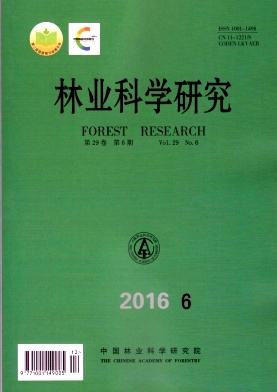|
[1]
|
马华明, 梁坤南, 周再知. 我国柚木的研究与发展[J]. 林业科学研究, 2003, 16(6): 768-773.
|
|
[2]
|
周铁锋. 中国热带主要经济树木栽培技术[M]. 北京: 中国林业出版社, 2001:288-291.
|
|
[3]
|
Zech W, Drechsel P. Relationships between growth, mineral nutrition and site factors of teak (Tectona grandis) plantations in the rainforest zone of Liberia[J]. Forest Ecology and Management, 1991, 41(3): 221-235. |
|
[4]
|
Drechsel P, Zech W. DRIS evaluation of teak (Tectona grandis L.f) mineral nutrition and effects of nutrition and site quality on teak growth in West Africa[J]. Forest Ecology and Management, 1994, 70(1): 121-133. |
|
[5]
|
Amonsah I, Meyer W. Soil characteristics in teak plantations and natural forests in Ashanti region, Ghana[J]. Communications in Soil Science and Plant Analysis, 2000, 31(3-4): 355-373. |
|
[6]
|
Rugmini P, Balagopalan M, Jayaraman K. Modelling the growth of teak in relation to soil conditions in the Kerala part of the Western Ghats. KFRI Research Report, 2007:1-46. |
|
[7]
|
Watanabe Y, Owusu-Sekyere E, Masunaga T, et al. Teak (Tectona grandis) growth as influenced by soil physicochemical properties and other site conditions in Ashanti region, Ghana[J]. Journal of Food, Agriculture & Environment, 2010, 8(2): 1040-1045. |
|
[8]
|
Samndi A M, Jibrin J M. Pedogenesis and Classification of Soils Under Teak (Tectona grandis Linn. f) Plantation of Various Ages in the Southern Guinea Savanna of Nigeria[J]. Asian Journal of Agricultural Sciences, 2012, 4(1): 16-25. |
|
[9]
|
Ziblim A, Damian T. Kingsley A. Assessment of soil quality improvement under Teak and Albizia[J]. Journal of Soil Science and Environmental Management, 2012, 3(4): 91-96. |
|
[10]
|
Tanaka N, Hamazaki T, Vacharangkura T. Distribution, growth and site requirements of teak[J]. JARQ Japan agricultural research quarterly, 1998, 32(1): 65-77. |
|
[11]
|
卢俊培. 海南柚木立地类型及评价[J]. 林业科学研究, 1994, 7(6): 677-684.
|
|
[12]
|
陶国祥. 柚木人工林地位指数表的编制[J]. 云南林业调查规划设计, 1997 (2): 27-31.
|
|
[13]
|
张树芬, 张荣贵. 河口县立地条件对柚木生长影响的调查研究[J]. 林业调查规划, 2005, 30(3): 111-114.
|
|
[14]
|
周再知. 酸性土壤柚木钙素营养研究. 北京:中国林业科学研究院, 2009.
|
|
[15]
|
热带林业研究所柚木调查组. 柚木生长与立地条件[J]. 热带林业科技, 1977(Z1): 4-12.
|
|
[16]
|
郭华北. 柚木人工林对土壤质量的反馈研究[J]. 现代农业科技, 2009(22): 195-196.
|
|
[17]
|
顾永顺, 孙吉慧, 刘晓, 等. 贵州省柚木适生区域研究[J]. 林业调查规划, 2011, 36(3): 26-28.
|
|
[18]
|
施荣达. 闽南沿海山地小地形对柚木人工林生长的影响[J]. 科技致富向导, 2013(23): 176-177.
|
|
[19]
|
Kaosa-ard A. Teak (Tectona grandis Linn. f) its natural distribution and related factors[J]. Nat His Bulletin Siam Soc,1981 (29): 55-74. |
|
[20]
|
黄昌勇, 徐建明.土壤学(第三版)[M]. 北京:中国农业出版社, 2010.
|
|
[21]
|
Seth S K, Yadav J S P. Teak soil[J]. Indian Forester, 1959,85(1):2-16. |
|
[22]
|
Tewari D N. A monograph on teak (Tectona grandis Linn.f.)[M]. Dehra Dun: International BooK Distributors, 1992. |
|
[23]
|
潘一峰, 邝炳朝, 刘文明. 柚木无性系耐酸性和耐铝 (A1) 毒性的测定[J]. 林业科学研究, 1999, 12(2): 152-159.
|
|
[24]
|
潘一峰, 刘文明. 酸性土壤改良对不同种源的柚木生长的影响[J]. 热带亚热带土壤科学, 1997, 6(1): 9-14.
|
|
[25]
|
Ugalde A L. TEAK: new trends in Silviculture, commercialization and wood utilization[M]. Cartago, Costa Rica: International Forestry and Agroforestry, 2013. |





 DownLoad:
DownLoad: